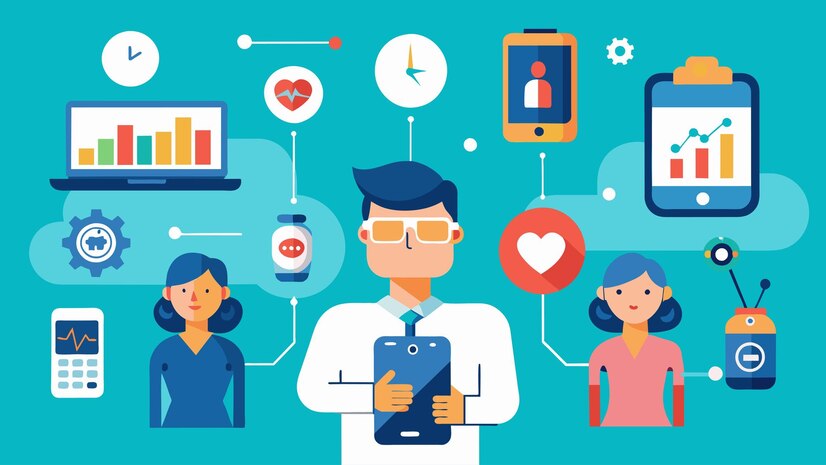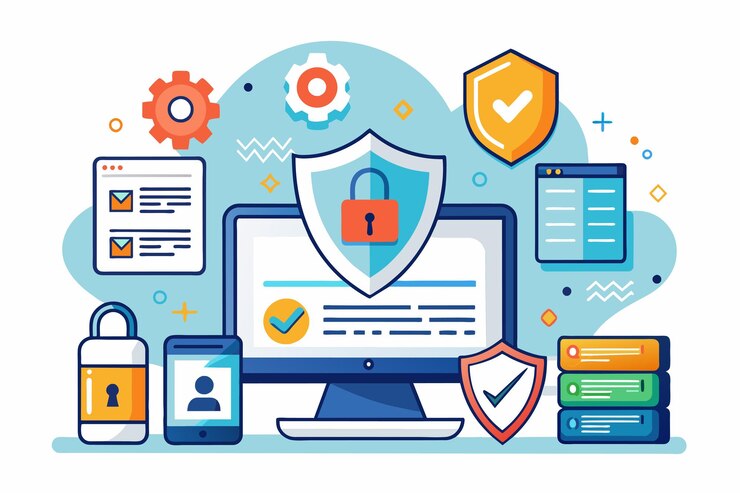eHealth Transformed Health Information Management represents a groundbreaking advancement in healthcare administration, integrating state-of-the-art technology with the fundamental management of health data. In an era characterized by digital innovation, HIM assumes a pivotal role, facilitating the seamless exchange of information essential for informed decision-making and effective patient care.
Through electronic platforms, eHealth HIM enhances data accuracy, accessibility, and collaboration among healthcare professionals, fostering a dynamic environment of innovation and advancement. As the healthcare landscape continues to evolve, eHealth HIM is poised to revolutionize the storage, analysis, and utilization of health information, shaping a future of transformative healthcare delivery. Join World BI's conference on Digital Health & AI Innovation Summit., focusing on eHealth and Health Information Management. Enhance your knowledge and stay ahead in healthcare.
- eHealth, which stands for electronic health, refers to the utilization of information technology and digital communication tools in the context of healthcare.
- It encompasses a wide array of applications and services aimed at improving the efficiency, accessibility, and quality of healthcare delivery.
- Examples include electronic health records (EHRs), telemedicine, mobile health apps, wearable devices, and online health education resources.
- The overarching goal of eHealth is to leverage digital technologies to enhance patient care, facilitate communication among healthcare providers, and empower individuals to actively participate in managing their health and well-being.

- Health Information Management (HIM) refers to the structured administration and utilization of health-related data within healthcare systems.
- This discipline encompasses the systematic collection, organization, storage, retrieval, analysis, and protection of patient health information.
- HIM professionals are tasked with ensuring the accuracy, confidentiality, and accessibility of medical records, both in traditional paper-based formats and increasingly in electronic health record (EHR) systems.
- Their responsibilities extend to coding diagnoses and procedures for billing and statistical purposes, implementing and maintaining health information technologies, and ensuring compliance with legal and regulatory requirements about health information.
- In essence, HIM plays a vital role in facilitating effective healthcare delivery, supporting clinical decision-making, and safeguarding patient privacy and data integrity.
The evolution of Health Information Management (HIM) has progressed significantly over time:
- Manual Record-Keeping: HIM initially relied on manual, paper-based record-keeping systems, leading to challenges in data accuracy and accessibility.
- Transition to Electronic Health Records (EHRs): With the advent of computers, HIM began transitioning to electronic systems, improving data management, storage, and retrieval.
- Regulatory Influences: Regulatory initiatives such as HIPAA prompted the adoption of EHRs and established standards for data security and privacy.
- Integration of Health Information Technologies: HIM has become increasingly intertwined with IT systems, leading to advancements in interoperability, data analytics, and patient engagement tools.
- Focus on Data Security and Privacy: HIM now places a heightened focus on cybersecurity and compliance with regulations like GDPR, ensuring the protection of patient information.
- Role Expansion: HIM professionals now play diverse roles beyond record management, including coding, revenue cycle management, and health informatics.
- Future Directions: HIM is moving towards enhanced interoperability, leveraging big data analytics, artificial intelligence, and blockchain technology to improve data management and patient care.
The integration of eHealth, encompassing the utilization of information and communication technologies (ICT) within healthcare, has brought about substantial transformations in health information management (HIM) practices:
1. Enhanced Efficiency and Accessibility:eHealth tools have streamlined HIM processes, facilitating swift data storage, retrieval, and sharing.
Electronic health records (EHRs) enable rapid access to patient information, fostering improved care coordination among healthcare providers.
2. Improved Data Accuracy and Quality:By minimizing manual record-keeping and employing standardized formats alongside automated data entry, electronic systems reduce errors, thereby enhancing the accuracy and quality of health information.
3. Promotion of Interoperability:Interoperable eHealth systems facilitate seamless exchange of health information across various healthcare settings and platforms, promoting care continuity and ensuring pertinent information availability to healthcare professionals as needed.
4. Empowerment of Patient Engagement:eHealth solutions empower patients to actively engage in their healthcare journey by offering access to their health information, appointment scheduling, medication reminders, and telehealth services.
This increased engagement often leads to improved health outcomes and heightened patient satisfaction.
5. Facilitation of Analytics and Decision Support:Many eHealth platforms incorporate analytical tools, enabling healthcare organizations to derive insights from extensive health data.
These insights inform decision-making processes, including resource allocation, quality improvement initiatives, and population health management strategies.
6. Attention to Privacy and Security:While eHealth introduces privacy and security challenges, such as safeguarding sensitive health data from breaches or unauthorized access, modern eHealth systems prioritize robust security measures to protect patient information, often exceeding the security standards of traditional paper-based records.
7. Realization of Cost Savings:Despite the initial investment required for eHealth infrastructure and implementation, the long-term benefits include cost savings through heightened efficiency, reduced paperwork, fewer redundant tests, and improved health outcomes stemming from enhanced care coordination.
Challenges & ConsiderationsHere are some of the challenges and considerations associated with eHealth in health information management (HIM):
- Guaranteeing the confidentiality, integrity, and accessibility of electronic health records.
- Safeguarding sensitive patient information from unauthorized access, breaches, and cybersecurity threats.
- Adhering to regulations like HIPAA (Health Insurance Portability and Accountability Act) to ensure patient privacy.
- Tackling the absence of standardized data formats and protocols across various eHealth systems.
- Overcoming obstacles to seamless health information exchange among different systems and healthcare entities.

- Closing the gap in eHealth technology access among different demographics, including rural communities, elderly individuals, and socioeconomically disadvantaged groups.
- Ensuring fair access to digital health resources and addressing disparities in healthcare provision.
- Encouraging the acceptance and utilization of eHealth tools by healthcare professionals, administrators, and patients.
- Providing sufficient training and support to users to maximize eHealth system benefits and minimize resistance to change.
- Integrating eHealth systems with existing healthcare infrastructure and workflows seamlessly.
- Overcoming technical and organizational barriers to integration and interoperability.
- Handling issues such as incomplete or inaccurate data entry, duplicate records, and data fragmentation.
- Implementing data governance policies and quality assurance measures to ensure reliable and usable health information.
- Navigating complex legal and regulatory requirements governing electronic health records' use, storage, and sharing.
- Keeping up with evolving regulations and standards, such as GDPR (General Data Protection Regulation) in the European Union.
- Managing the initial costs of eHealth system implementation, including infrastructure investments, software licenses, and training expenses.
- Ensuring long-term financial sustainability through cost-effective eHealth technology use and demonstrating return on investment.
eHealth has transformed Health Information Management, improving data management, accessibility, and patient care. Challenges persist, but the benefits of efficiency, better outcomes, and patient-centered care are undeniable. Continued innovation in eHealth holds promise for further advancements in healthcare delivery and management. World BI is organizing a conference on Digital Health & AI Innovation Summit, featuring comprehensive discussions on eHealth and Health Information Management. Expand your expertise by joining us at the conference and staying at the forefront of these critical topics in healthcare. Follow for more updates, World BI.